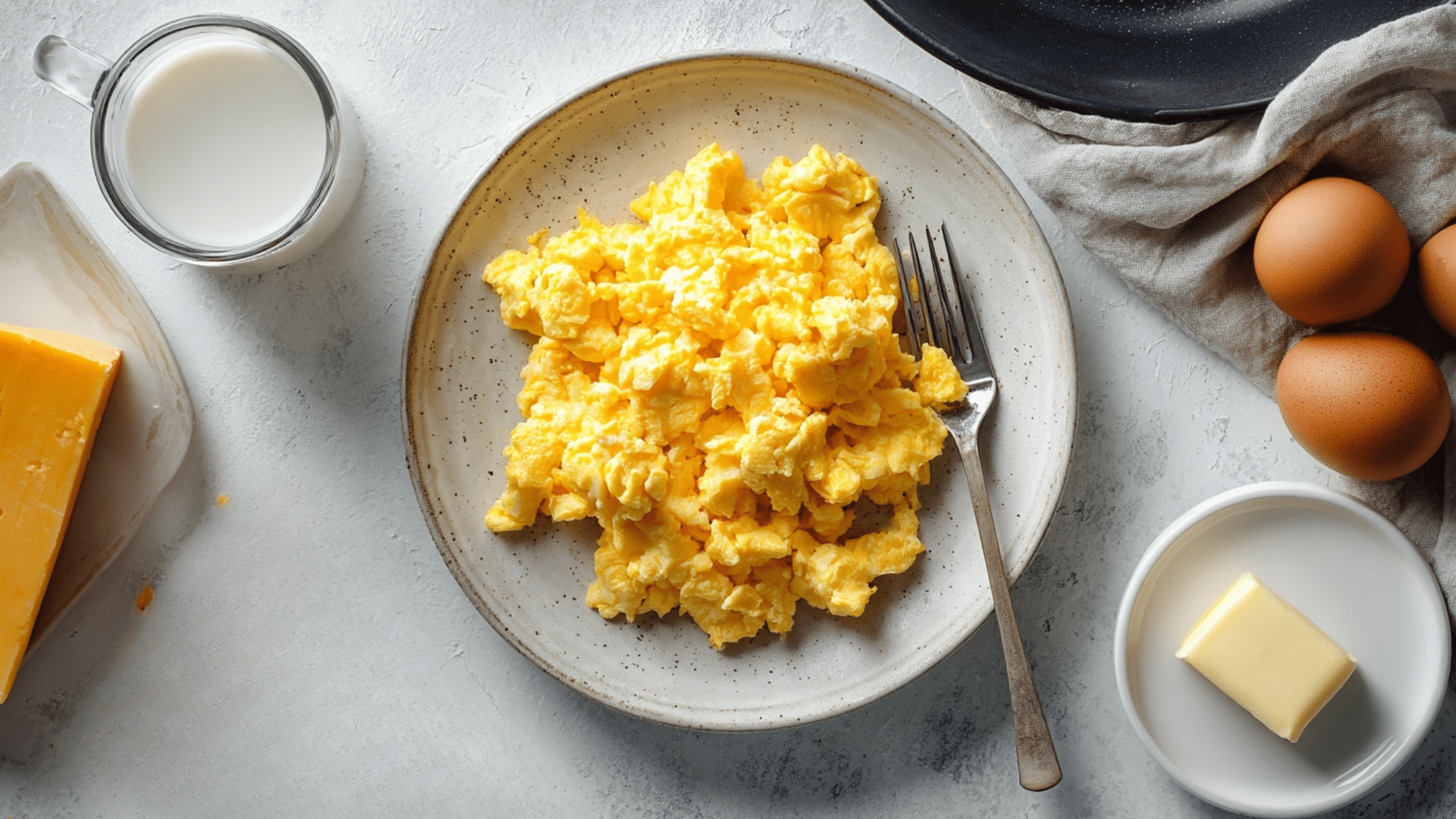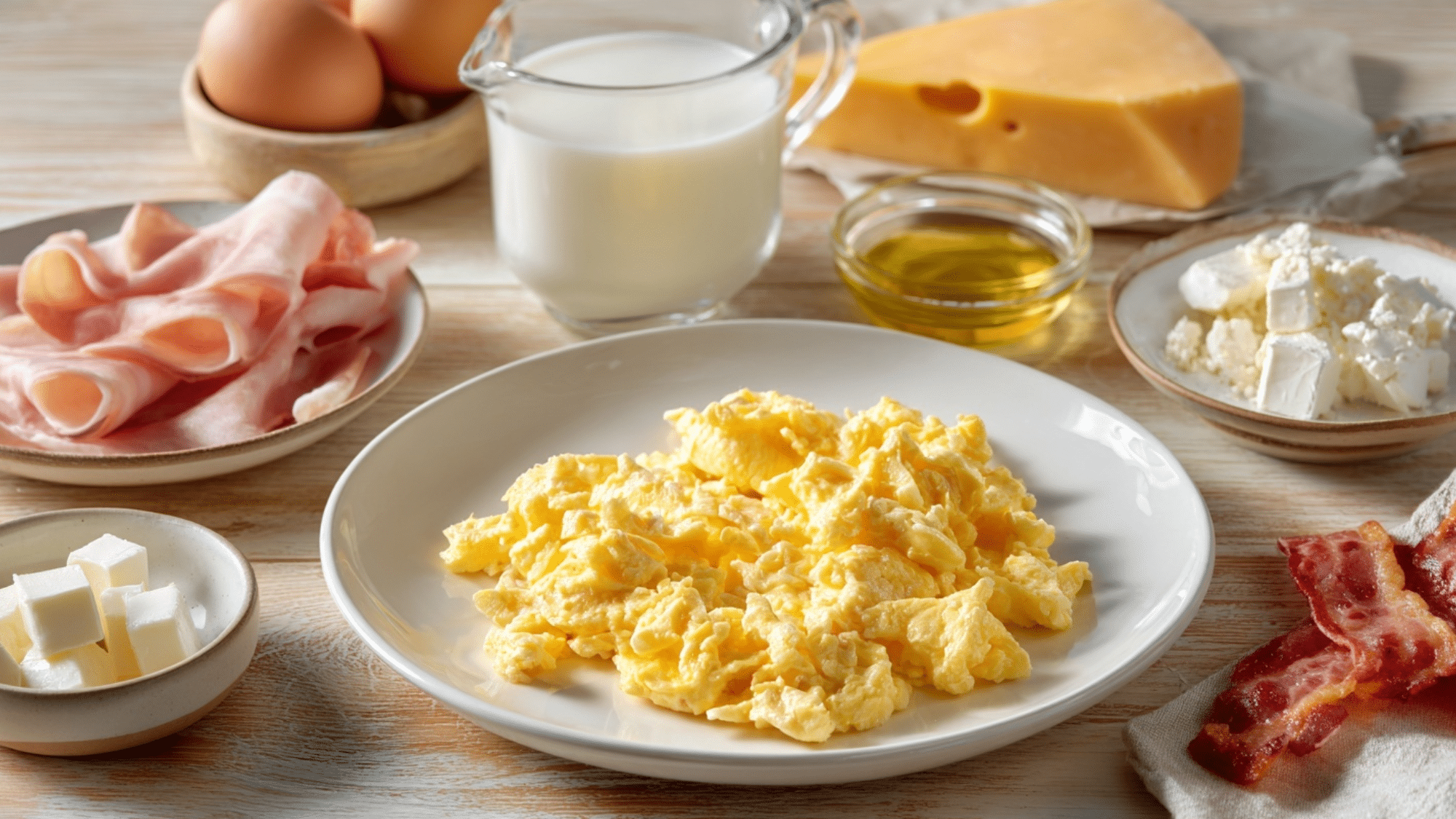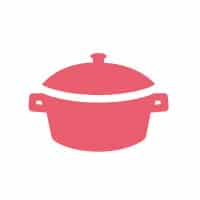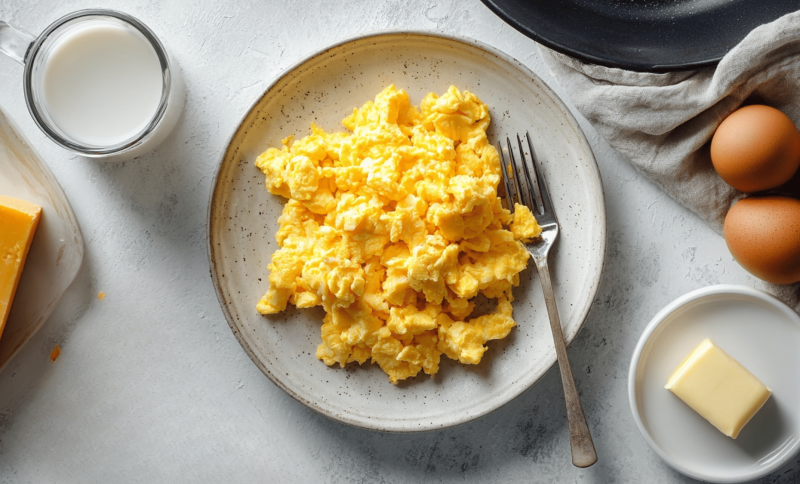You just whipped up a fluffy three-egg scramble for breakfast, but how many calories did you actually consume? The answer isn’t as simple as you might think.
Those golden eggs on your plate could range anywhere from 215 calories to over 400, depending on what you added to the pan.
If you cooked them plain, splashed in some milk, melted butter, or loaded them with cheese, it makes a huge difference in your final calorie count.
Here you’ll find the exact numbers for every scenario, plus the protein and macro details you need.
How Many Calories Are in 3 Scrambled Eggs?
Three scrambled eggs contain roughly 270 to 305 calories if cooked without any added ingredients, though the exact number depends on the egg size and the database you reference.
A raw large egg generally provides 72 to 78 calories, so three of them add up to about 215 to 234 calories before cooking. The difference between raw and scrambled values comes from the way foods are measured in nutrition databases.
Scrambled egg entries often assume the addition of a small amount of fat or milk during preparation, which pushes the total upward.
If you prepare your scramble with nothing more than eggs in a nonstick pan, the lower estimate is closer to reality, but if you stir in a splash of milk or cook with butter, the calorie count will quickly climb higher.
Understanding the Real Calorie Count in Your 3-Egg Scramble

Getting accurate calorie counts means understanding the difference between raw eggs and prepared dishes. Let’s clear up the confusion around these numbers.
Plain vs. Cooked: Why Numbers Differ
Raw eggs and scrambled eggs show different calorie counts due to database assumptions. Three large raw eggs contain 215 calories, but scrambled egg entries show 273 to 304 calories.
This happens because scrambled egg databases assume typical cooking fats like butter or oil. The eggs themselves don’t change calories when cooked, but added fats during preparation increase the total count.
Raw eggs and dry-cooked eggs in nonstick pans have nearly identical calories. The higher numbers reflect what most people add while cooking.
Quick Calculator: Common Scenarios
Here’s how different ingredients affect your 3-egg scramble calorie count:
| SCENARIO | CALORIES | SOURCE |
|---|---|---|
| 3 eggs, no fat, no milk | 215-234 kcal | Eat This Much |
| + 1 tsp butter | +34 kcal | FatSecret |
| + 2 Tbsp whole milk | +18 kcal | FatSecret |
| + 28g (1 oz) cheddar cheese | +110 kcal | MyFoodData |
Example Combinations: Start with 215-234 calories for three plain eggs. Add butter (249-268 calories), milk (267-286 calories), or cheese (359-378 calories with butter). A fully loaded scramble with all add-ins reaches 377-396 calories. Small additions add up quickly.
Nutrition Facts: 3 Large Scrambled Eggs (Whole, Cooked)
Here’s the complete nutritional breakdown for three scrambled eggs, showing exactly what nutrients you get with those calories.
| NUTRIENT | AMOUNT | % DAILY VALUE* |
|---|---|---|
| Calories | 304 kcal | — |
| Total Fat | 22.3 g | 29% |
| Protein | 20.3 g | — |
| Carbs | 4.0 g | 1% |
| Cholesterol | 644 mg | 215% |
| Sodium | 512 mg | 22% |
| Vitamin A | 262 mcg | 29% |
| Vitamin D | 2 mcg | 8% |
| Calcium | 130 mg | 10% |
| Iron | 2.2 mg | 12% |
Disclaimer: Nutritional values may vary based on egg size, cooking method, and added ingredients. These figures represent general averages and should be used as estimates for dietary planning. Consult a healthcare provider for personalized nutrition advice.
Calories by Egg Size (If You Use Medium/Jumbo)
Not all eggs are the same size, and this affects your total calorie count more than you might think.
| EGG SIZE | CALORIES PER EGG | CALORIES FOR 3 EGGS |
|---|---|---|
| Medium | 60-65 kcal | 180-195 kcal |
| Large | 70-80 kcal | 210-240 kcal |
| Extra Large | 80-85 kcal | 240-255 kcal |
| Jumbo | 90-95 kcal | 270-285 kcal |
Disclaimer: Calorie counts may vary slightly between different brands and farming methods. These numbers represent general averages and should be used as estimates for meal planning purposes.
How Add-Ins Change the Total (Milk, Butter, Cheese, Veggies)

Small additions can make a big difference in your final calorie count. Here’s exactly what each common ingredient adds to your scrambled eggs.
1. Butter & Oil
Most home cooks use 1 to 2 teaspoons of butter when scrambling eggs. Each teaspoon of butter adds 34 calories, so you’re looking at 34 to 68 extra calories just from cooking fat. Oils like olive or vegetable oil contain about 40 calories per teaspoon.
2. Milk/Cream
Adding milk creates fluffier eggs but increases calories:
- 2 Tbsp whole milk: +18 calories
- 2 Tbsp 1% milk: +13 calories
- 2 Tbsp heavy cream: +52 calories
For reference, two large eggs with a small amount of butter plus 2 tablespoons of semi-skim milk total about 200 to 245 calories. Scale this up to three eggs for a similar preparation.
3. Cheese & Meaty Mix-ins
Common protein additions can quickly boost your scramble’s calorie count.
| ADD-IN | AMOUNT | CALORIES ADDED |
|---|---|---|
| Cheddar cheese | 1 oz (28g) | +110 kcal |
| Feta cheese | 1 oz (28g) | +75 kcal |
| Ham | 1 oz (28g) | +30 kcal |
| Bacon | 2 strips | +90 kcal |
| Swiss cheese | 1 oz (28g) | +105 kcal |
Choose your add-ins wisely since cheese and processed meats pack the most calories per serving.
4. High-Protein Upgrades
Want extra protein without tons of calories? Mix in 2 tablespoons of cottage cheese. It adds about 25 calories but boosts protein by 3 to 4 grams and creates incredibly creamy eggs. Note that cottage cheese does increase sodium content, so consider this if you’re watching salt intake.
Scrambled vs. Other Cooking Methods: Calorie Comparisons
The cooking method itself barely changes egg calories, as it’s all about what you add during preparation.
| COOKING METHOD | CALORIES (3 EGGS) | NOTES |
|---|---|---|
| Hard-boiled | 215 to 234 kcal | Same as raw eggs |
| Scrambled (plain) | 215 to 234 kcal | No added fats |
| Fried | 249 to 354 kcal | +34 kcal per tsp butter, +40 kcal per tsp oil |
| Plain omelet | ~300 kcal | The database average assumes cooking fat |
The base nutrition stays the same regardless of cooking method. Higher calorie counts come from added oils, butter, or other ingredients used during cooking, not from the cooking process itself.
Are 3 Eggs Right for Your Goals?
Three eggs can fit into most eating plans, but it depends on your specific health and fitness targets.
Three eggs deliver 18-19 grams of protein, which fits perfectly into the 20-30 gram range that nutrition experts recommend per meal. This amount supports muscle building, weight management, and keeps you satisfied for hours.
For weight loss, the high protein and healthy fats in eggs can actually help by reducing cravings later in the day. For muscle building, eggs provide all nine essential amino acids your body needs.
The key is being mindful of what you add to the pan.
Conclusion
From basic breakfast to calorie-counting champion, you’ve now cracked the code on scrambled egg nutrition. Those three simple eggs pack a serious nutritional punch while giving you complete control over your calorie intake.
If you’re aiming for a light 215-calorie start or building a hearty 350-calorie powerhouse, the choice is yours. The secret isn’t avoiding add-ins, it’s choosing them wisely.
Vegetables add volume without calories, cottage cheese boosts protein, and cooking spray saves you from butter’s extra fat.
With 18 grams of complete protein and essential vitamins in every serving, scrambled eggs prove that healthy eating doesn’t have to be complicated.
Your perfect scramble is just one smart swap away.













